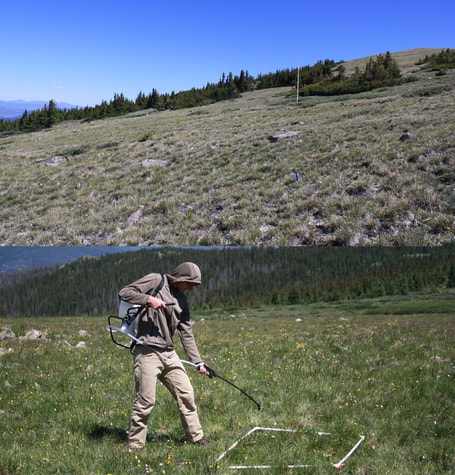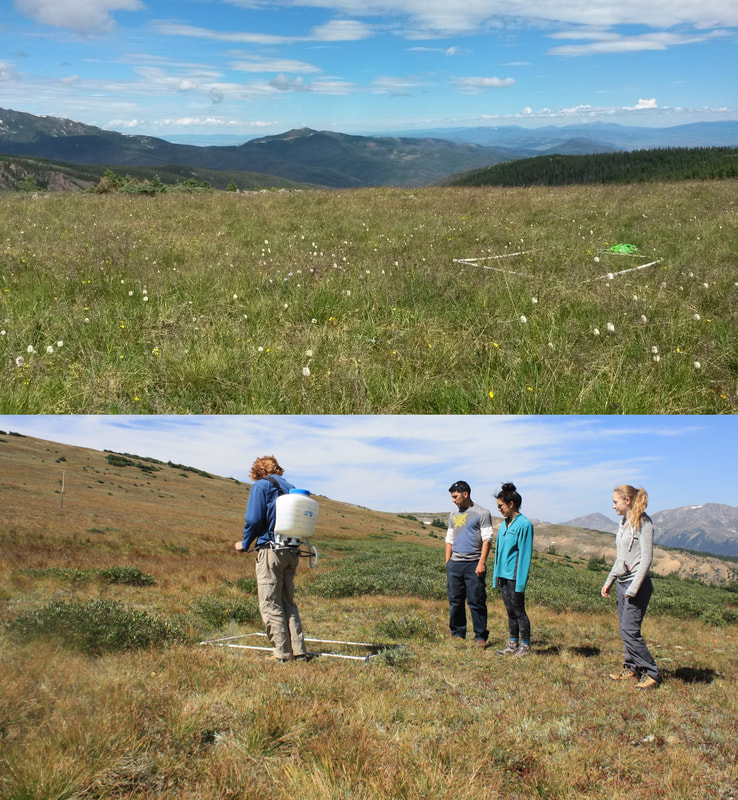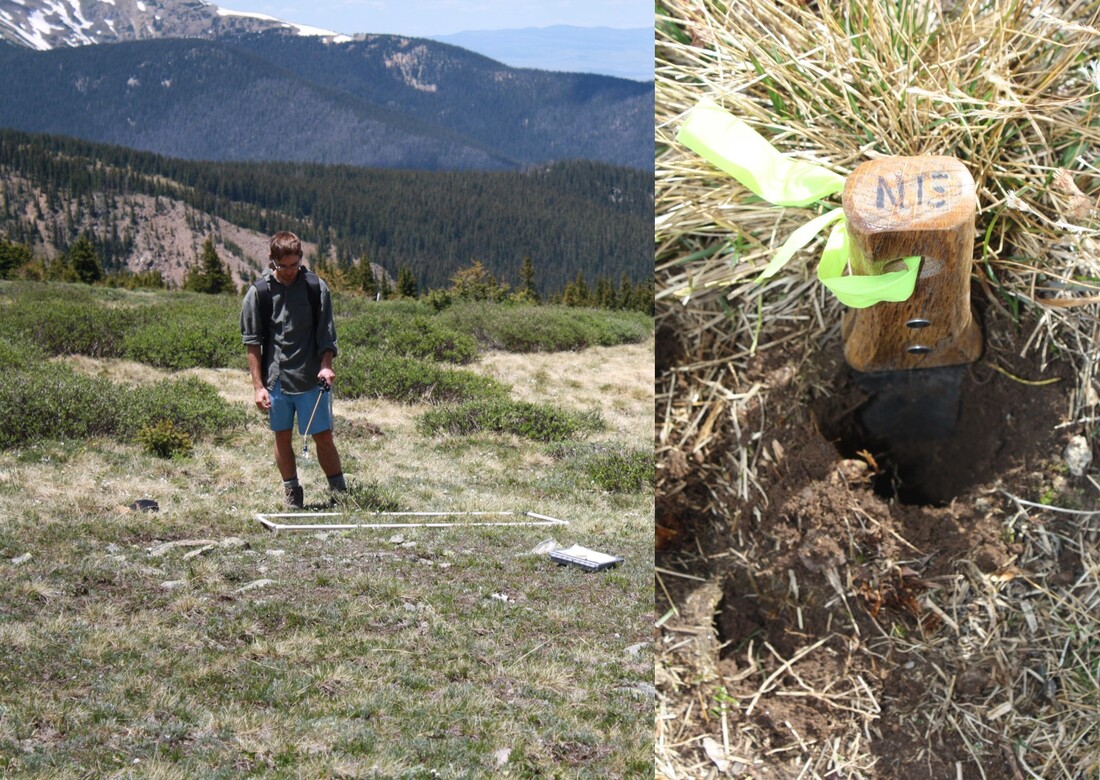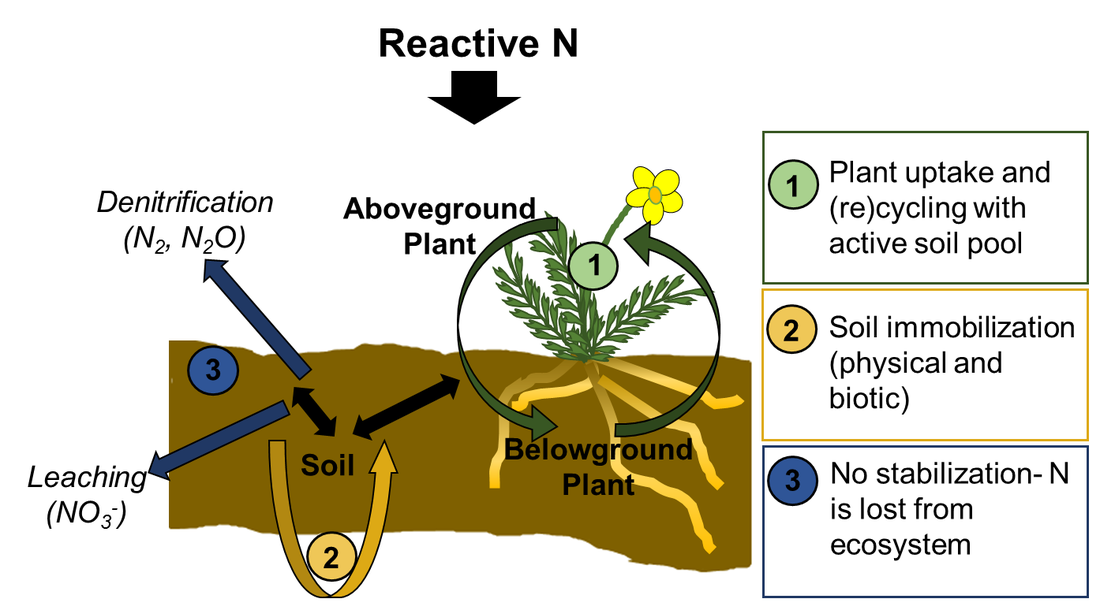Alpine moist meadow response to a regional gradient of nitrogen deposition in the Rocky Mountains
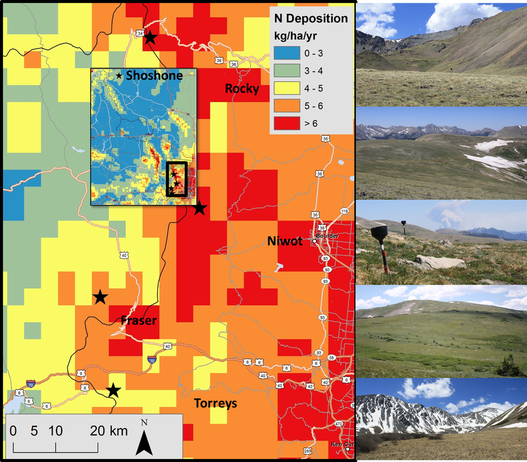
Human alteration of the nitrogen (N) cycle has resulted in a drastic increase in availability of biologically active N. Alpine ecosystems are particularly susceptible to increased inputs of N due to shallow soils, a short growing season, and more precipitation and therefore higher rates of N input than surrounding lower elevation areas. The objective of our study was to examine effects of ambient N deposition in alpine moist meadow communities, and determine whether changes in plant and ecosystem indicators are correlated with N deposition. We found that a number of ecosystem responses were correlated with ambient N deposition, including the tissue N concentration of dominant plant species at peak biomass, and abundance of a nitrophilic dominant grass species. These species are known to have an influence on N processing in soil, and are therefore important potential plant-soil feedback mechanisms facilitating future ecosystem responses to environmental changes. Additionally, we found that plant diversity was negatively correlated with increasing N deposition and there were significant differences in species composition among sites receiving different levels of N deposition. We found less support for a correlation between soil responses and N deposition, with only weak correlations between resin bag N or soil pore water concentrations of nitrate and N deposition during two years of sampling. These findings suggest that while the Rocky Mountain alpine is being affected by N deposition, impacts have been detected only for biotic changes while biogeochemical changes currently are minimal.
Alpine plant community controls on ecosystem N pools and stabilization of N under the influence of N deposition
Community scale processes can moderate or accentuate ecosystem functions in the face of environmental changes. Comparisons among communities therefore addresses variation in plant and soil responses to global change that moderate ecosystem change. Elevated levels of nitrogen (N) deposition can cause ecosystem modifications with changes in N availability have the potential to alter existing plant-soil feedbacks. In this study, we compared a suite of ecological response metrics for both plants and soils to N deposition among three communities (dry, moist, and wet meadows) associated with landscape heterogeneity in the alpine. The three communities included contrasting factors that influence ecosystem changes resulting from N deposition, such as differences in species diversity, species traits for resource-use, and background levels of resource availability. The response metrics were selected to examine variation in responses that may contribute feedbacks associated with ecosystem change from relatively low dosage levels of experimental N additions (0, 3, 12, and 30 kg N ha-1 yr-1). In general, we found evidence for community specific responses of both plant and soil metrics, with the strongest response in the dry meadow community. Physiological plant responses, primarily associated with an increase in foliar N, were the most common among all three meadow types; however the wet meadow showed the only evidence for increased productivity with N inputs. Additionally, we determined that the dry meadow community showed the lowest average ecological thresholds to N deposition, including an increase in foliar N (15 kg N ha-1 yr-1), increases in species diversity (> 34.6 kg N ha-1 yr-1) and changes in resin extractable soil N (32.2 kg N ha-1 yr-1) after three years of low dosage N additions. Our results highlight the importance of considering among-community variation in ecosystem processes, especially for ecosystems with high spatial heterogeneity in biogeochemical cycling such as the alpine, boreal forests, or wetland areas.
Alpine community dependent responses may contribute important feedbacks influencing ecological thresholds to elevated nitrogen deposition in the Rocky Mountains
Few studies have examined ecosystem factors that drive variation in nitrogen (N) uptake and stabilization between N pools among ecosystems, despite increased anthropogenic production of reactive N that has resulted in elevated inputs of N deposition in many areas around the globe. The consequences for long-term ecosystem responses to elevated N deposition are linked with different processes of N stabilization, or uptake, that contribute to the storage of N among ecosystem pools. Plant communities can elicit unique assemblages of potential plant-soil feedbacks contributing to N stabilization, making comparisons among communities useful in examining factors influencing N stabilization. To examine community contributions to ecosystem N stabilization we used an enriched 15N isotope tracer to compare N pools associated with stabilization of N in control and N fertilization plots (30 kg N ha-1 yr-1) among three alpine plant communities (dry, moist, and wet meadows). We found strong evidence for differences in the processes affecting N stabilization at the community scale that may have important implications for long-term ecosystem responses to N deposition. Specifically, we found significant differences in the responsiveness, or enrichment, of plant based N pools to take up 15N tracer among pools within communities. The total uptake, or recovery, also varied among the three alpine communities in aboveground, belowground and soil pools of N. Total 15N tracer recovery across all pools was highest in the wet meadow community, intermediate in the dry meadow, and lowest in the moist meadow community. Nitrogen addition increased the enrichment of both aboveground and belowground pools for all communities, and had a positive effect on the recovery of 15N for aboveground litter among all communities and recovery of 15N belowground biomass in the dry meadow community. Total recovery among all communities remained low (6-15%), however little change in recovery of tracer between years suggests that this site has not yet reached N saturation, even under the fertilization treatment.
